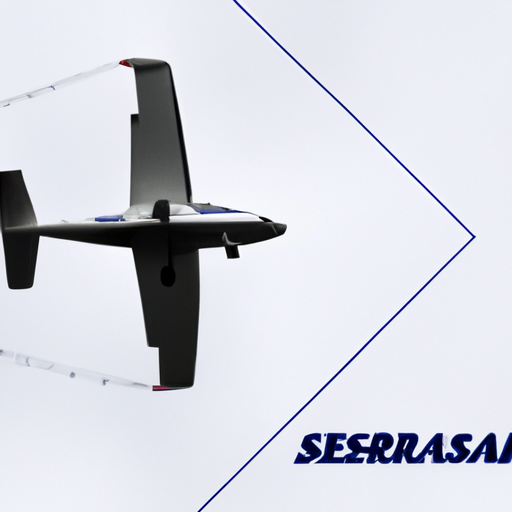
Do you love flying and exploring the skies? If so, then you must have heard about the Cessna 414! It’s an incredible aircraft that has gained popularity among aviation enthusiasts. In this article, we will delve into the details of the Cessna 414, its features, and why it has become a favorite among pilots. So, buckle up and get ready to learn more about this amazing plane!
The Cessna 414 is a versatile twin-engine aircraft that has been widely used for both personal and business purposes. It boasts a sleek design and impressive performance capabilities that make it a top choice in the general aviation world. With a maximum speed of around 230 knots and a range of over 1,000 nautical miles, the Cessna 414 allows pilots to reach their destinations quickly and comfortably. Its spacious cabin can accommodate up to eight people, making it suitable for group travel or business meetings in the air. Moreover, the Cessna 414 is equipped with advanced avionics and navigation systems, ensuring a smooth and safe flying experience. So, if you’re interested in learning more about this remarkable aircraft, keep reading to discover all the fascinating details!

Overview
The Cessna 414 is a versatile six-seat, pressurized twin-engine aircraft produced by Cessna. It has a reputation for being reliable and is commonly used for both personal and business travel. In this article, we will delve into the history, design, specifications, operational usage, safety, maintenance, market value, advantages, disadvantages, notable pilots, and accidents associated with the Cessna 414.
Introduction to the Cessna 414
The Cessna 414, also known as the Chancellor, was first introduced in 1968 as a variant of the Cessna 401 and 402. It was designed to meet the demands of pilots in need of a larger and more capable aircraft. With its spacious cabin and impressive performance capabilities, the Cessna 414 quickly gained popularity among private owners, corporate executives, and small charter operators.
Design and features of the Cessna 414
The Cessna 414 features a sleek and aerodynamic design, optimized for both performance and comfort. Its low-wing configuration provides excellent stability and allows for easy access to the cabin and luggage compartments. The aircraft is equipped with retractable landing gear, allowing for smooth takeoffs and landings.
The cabin of the Cessna 414 is designed to provide maximum comfort for passengers. It can accommodate up to six individuals and offers ample legroom and headspace. The pressurization system ensures a comfortable flying experience, even at high altitudes. Additionally, the cabin is equipped with modern avionics, including a comprehensive navigation system, making it easy for pilots to handle the aircraft.
History and Development
Origins of the Cessna 414
The Cessna 414 traces its roots back to the Cessna 401 and 402, which were introduced in the 1960s. These aircraft were initially designed for shorter-range flights and had seating capacities of four to six individuals. However, Cessna recognized the need for a larger and more powerful aircraft, leading to the development of the Cessna 414.
Development process and milestones
The development of the Cessna 414 involved extensive research and testing to ensure superior performance and safety. Several prototypes were built and evaluated before the final design was approved for production. The aircraft went through rigorous testing to meet FAA regulations and demonstrate its reliability. The first production model of the Cessna 414 rolled out in 1968, marking a significant milestone in the aviation industry.

Specifications
Physical dimensions of the Cessna 414
The Cessna 414 has a wingspan of 44 feet and 1 inch (13.4 meters) and a length of 36 feet and 8 inches (11.2 meters). It has a maximum takeoff weight of 6,300 pounds (2,858 kilograms) and a usable fuel capacity of 206 gallons (780 liters). The aircraft has a cruising speed of 227 knots (263 miles per hour) and a range of approximately 1,600 nautical miles (1,840 statute miles or 2,963 kilometers).
Engine and performance specifications
The Cessna 414 is powered by two Continental Motors TSIO-520-NB engines, each producing 325 horsepower. These engines provide the aircraft with excellent performance and the ability to fly at high altitudes. The Cessna 414 has a maximum operating altitude of 30,000 feet (9,144 meters) and a climb rate of 1,750 feet per minute. It also has a maximum payload of approximately 1,700 pounds (771 kilograms).
Variants
The Cessna 414 has several variants, each offering unique features and capabilities. One notable variant is the Cessna 414A, also known as the Chancellor II. This variant introduced changes to the design, including an extended nose and increased fuel capacity, resulting in improved performance and range.
Operational Usage
Applications of the Cessna 414
The Cessna 414 is commonly used for a variety of applications. Its versatility allows it to serve as a personal aircraft for wealthy individuals, a corporate jet for executives, and a charter aircraft for small operators. The spacious cabin and range of the Cessna 414 make it suitable for both short and long-haul flights.
Popular industries utilizing the aircraft
The Cessna 414 is particularly popular in industries that require regular air travel, such as executive transport and air charter services. It is often utilized by companies for business trips, allowing executives to easily travel between locations. Additionally, the aircraft is favored by those in the tourism industry, providing scenic flights and transporting tourists to remote destinations.
Safety and Maintenance
Safety features and regulations
The Cessna 414 incorporates various safety features to ensure the well-being of passengers and crew. It is equipped with redundant systems, such as dual electrical and hydraulic systems, to minimize the risk of malfunctions. The aircraft also has anti-icing equipment, including de-icing boots and heated propellers, to prevent ice buildup during flight.
In terms of regulations, the Cessna 414 adheres to the requirements set by aviation regulatory authorities, such as the FAA. These regulations cover areas such as maintenance inspections, aging aircraft inspections, and pilot certifications. Regular maintenance and inspections are crucial to ensure the aircraft’s continued airworthiness and safety.
Routine maintenance procedures
Routine maintenance procedures for the Cessna 414 include regular engine inspections, propeller maintenance, and avionics checks. Additionally, the aircraft requires periodic inspections of its pressurization system and landing gear. These maintenance procedures are essential to maintain the safety and performance of the aircraft.
Market and Cost
Price range of the Cessna 414
The price range of a used Cessna 414 varies depending on factors such as the aircraft’s age, condition, and avionics. On the market, prices can range from $300,000 to $700,000. Newer aircraft or those with upgraded avionics may command higher prices.
Factors affecting the market value
Several factors can influence the market value of a Cessna 414. These include the total airframe and engine hours, avionics upgrades, maintenance records, and the overall condition of the aircraft. Additionally, economic factors and market demand can also impact the pricing of used aircraft.
Advantages and Disadvantages
Benefits of the Cessna 414
The Cessna 414 offers numerous advantages to pilots and passengers. Its spacious cabin provides comfort during long flights, and the pressurization system ensures a pleasant flying experience at high altitudes. The aircraft’s twin-engine configuration offers added safety and redundancy, allowing for continued flight in the event of an engine failure. Additionally, the Cessna 414 boasts excellent performance capabilities, including a high cruising speed and a long-range, making it ideal for both personal and business travel.
Limitations and drawbacks
Despite its many advantages, the Cessna 414 also has some limitations. One limitation is the aircraft’s relatively high operating costs compared to single-engine aircraft. The twin-engine setup requires more fuel and maintenance. Additionally, the Cessna 414 may require longer runways for takeoff and landing, which can limit its access to some airports.
Renowned Pilots and Accidents
Notable pilots who flew the Cessna 414
Over the years, the Cessna 414 has been flown by numerous pilots, some of whom are well-known in the aviation industry. These pilots have utilized the aircraft for various purposes, including personal travel, business engagements, and even record-breaking flights. Notable pilots include renowned aviators, business leaders, and celebrities.
Major accidents and incidents
Like any aircraft, the Cessna 414 has experienced accidents and incidents throughout its history. These accidents can be attributed to a variety of factors, including pilot error, fuel system malfunctions, and severe weather conditions. While each incident is unique, safety measures and improved training have contributed to an overall decrease in accidents involving the Cessna 414.
Conclusion
The Cessna 414 is a remarkable aircraft that remains popular among private owners, corporate executives, and small operators. With its spacious cabin, excellent performance capabilities, and safety features, it continues to excel in the aviation industry. Despite some limitations, the Cessna 414’s versatility makes it a reliable choice for those seeking reliable and comfortable air travel. Whether used for personal or business purposes, the Cessna 414 offers a reliable and enjoyable flying experience.



Leave a Reply